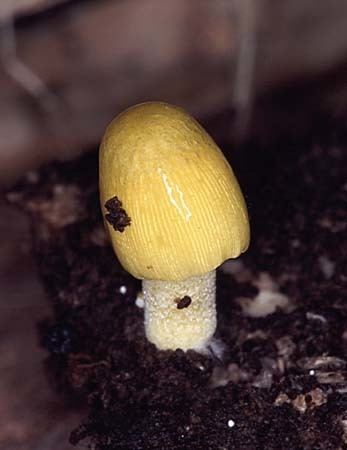 | ||
Primary nutritional groups are groups of organisms, divided in relation to the nutrition mode according to the sources of energy and carbon, needed for living, growth and reproduction. The sources of energy can be light and organic or inorganic compounds; the sources of carbon can be of organic or inorganic origin.
Contents
The terms aerobic respiration, anaerobic respiration and fermentation do not refer to primary nutritional groups, but simply reflect the different use of possible electron acceptors in particular organisms, such as O2 in aerobic respiration, or NO3−, SO42− or fumarate in anaerobic respiration, or various metabolic intermediates in fermentation. Because all ATP-generating steps in fermentation involve modifications of metabolic intermediates instead of the use of an electron transport chain fermentation is often referred to as substrate-level phosphorylation.
Energy and carbon
A chemoorganoheterotrophic organism is one that requires organic substrates to get its carbon for growth and development, and that produces its energy from oxido-reduction of an organic compound. This group of organisms may be further subdivided according to what kind of organic substrate and compound they use. Decomposers are examples of Chemoorganoheterotrophs which obtain carbon and electron reactions from dead organic matter. Herbivores and carnivores are examples of organisms that obtain carbon and electron reactions from living organic matter.
Chemoorganotrophs are organisms which oxidize the chemical bonds in organic compounds as their energy source. Chemoorganotrophs also attain the carbon molecules that they need for cellular function from these organic compounds. The organic compounds that they oxidize include sugars (i.e. glucose), fats and proteins.
All animals are chemoheterotrophs (meaning they oxidize chemical compounds as a source of energy and carbon), as are fungi, protozoa, and some bacteria. The important differentiation amongst this group is that chemoorganotrophs oxidize only organic compounds while chemolithotrophs instead use inorganic compounds as a source of energy.
Primary metabolism table
The following table gives some examples for each nutritional group:
Mixotrophs
Some, usually unicellular, organisms can switch between different metabolic modes, for example between photoautotrophy, photoheterotrophy, and chemoheterotrophy in Chroococcales Such mixotrophic organisms may dominate their habitat, due to their capability to use more resources than either photoautotrophic or organoheterotrophic organisms.
Examples
All sorts of combinations may exist in nature. For example, most cyanobacteria are photoautotrophic, since they use light as an energy source, water as electron donor, and CO2 as a carbon source. Fungi are chemoorganotrophic since they use organic carbon as both an electron donor and carbon source. Eukaryotes are generally easy to categorise. All animals are heterotrophic, as are fungi. Plants are generally photoautotrophic. Some eukaryotic microorganisms, however, are not limited to just one nutritional mode. For example, some algae live photoautotrophically in the light, but shift to chemoorganotrophy in the dark. Even higher plants retained their ability to respire heterotrophically on the starch at night which had been synthesised phototrophically during the day.
Prokaryotes show a great diversity of nutritional categories. For example, purple sulfur bacteria and cyanobacteria are generally photoautotrophic whereas purple non-sulfur bacteria are photoorganotrophic. Some bacteria are limited to only one nutritional group, whereas others are facultative and switch from one mode to the other, depending on the nutrient sources available.
